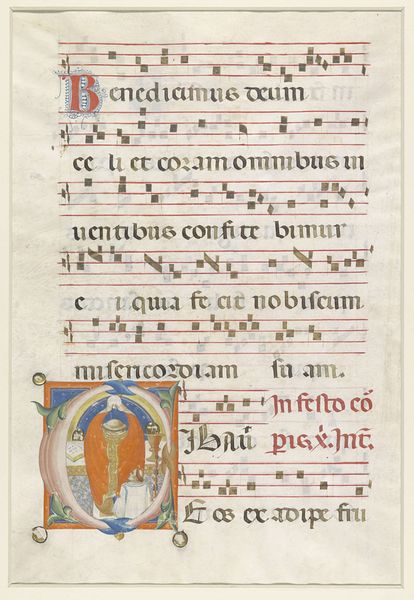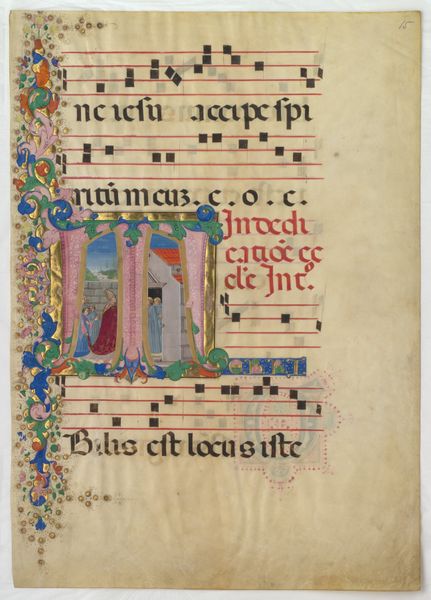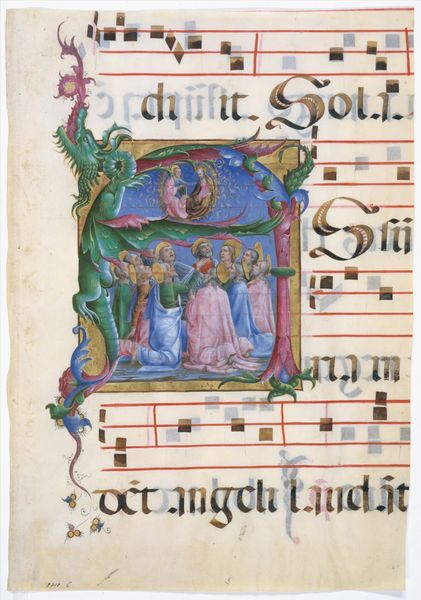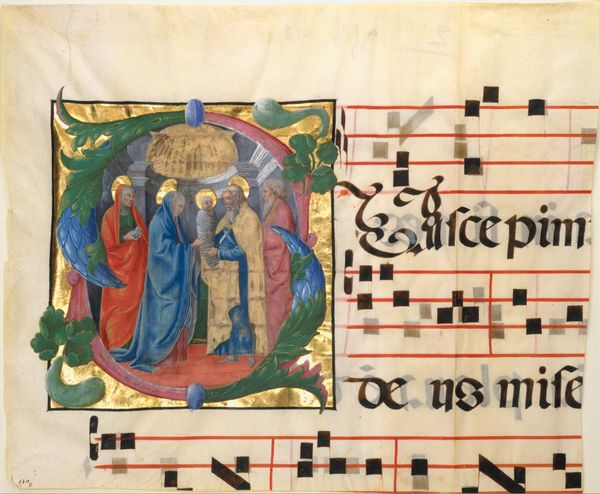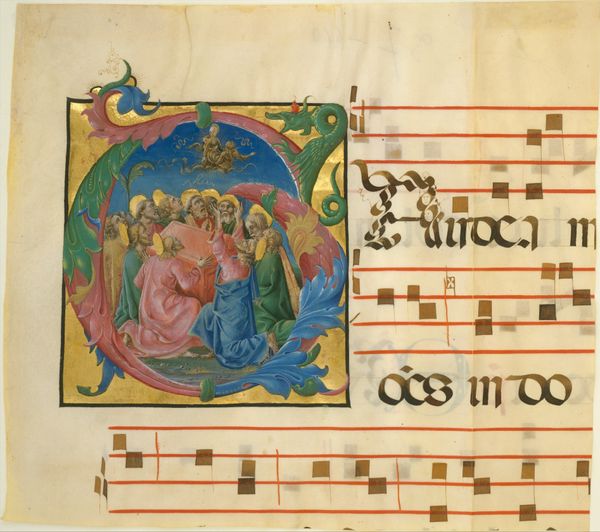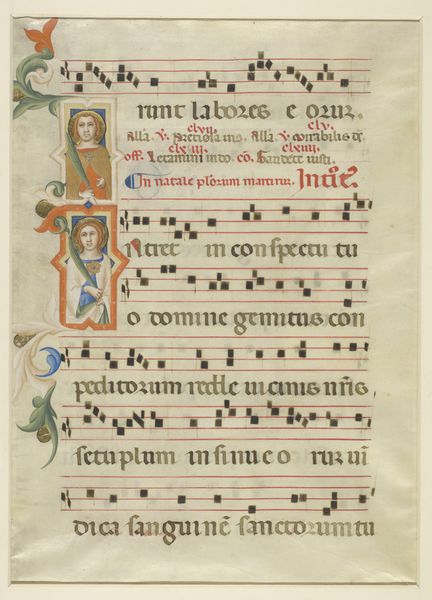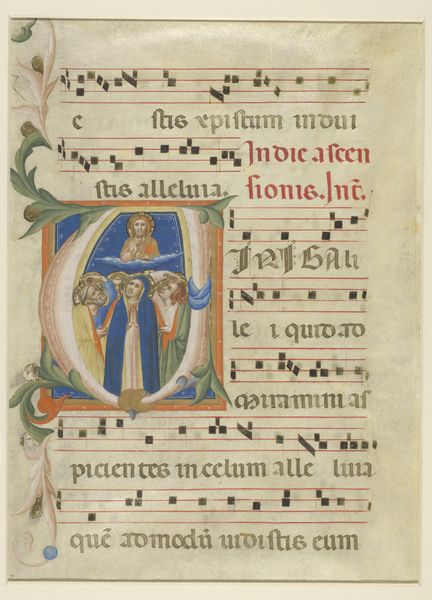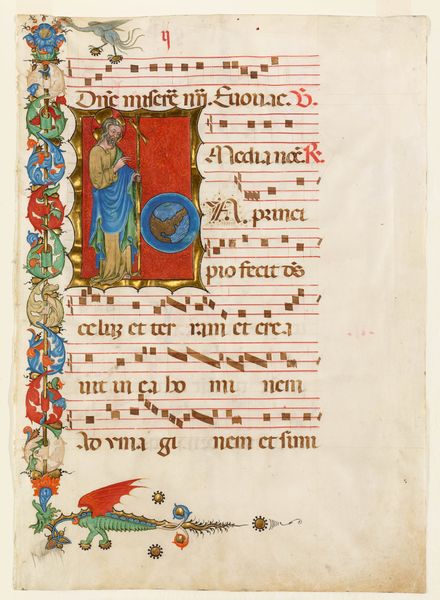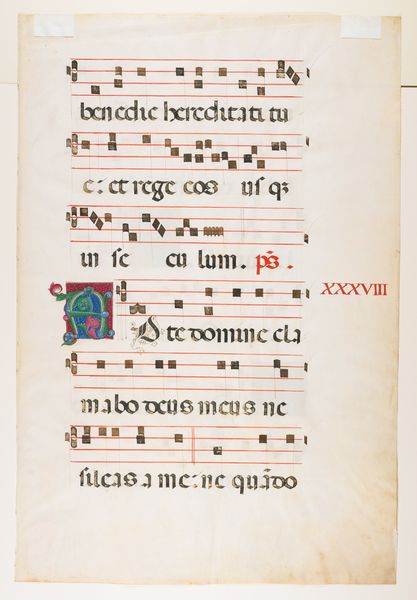
drawing, tempera, watercolor
#
drawing
#
byzantine-art
#
medieval
#
water colours
#
narrative-art
#
tempera
#
watercolor
#
coloured pencil
#
italian-renaissance
#
miniature
Dimensions: overall: 58.9 x 42.5 cm (23 3/16 x 16 3/4 in.)
Copyright: National Gallery of Art: CC0 1.0
Curator: Let's discuss Belbello da Pavia's "The Annunciation to the Virgin," created sometime between 1450 and 1460, a medieval manuscript illumination. It's tempera, watercolor, and ink on parchment. Editor: Immediately striking is its compartmentalized feeling. The figures are almost boxed in, creating a sense of both preciousness and constraint, surrounded by that elaborate border and text. Curator: Absolutely. The manuscript tradition often reflects strict social structures. Consider how the portrayal of Mary—her submission, her piety—serves a specific ideological function within the religious and societal contexts of the time. The very act of illuminating such a text reinforced patriarchal power. Editor: From a formal perspective, the symmetry is intriguing. Gabriel and Mary are mirror images in their respective spaces, connected by color—that pervasive blue—but separated by architectural elements. There’s a dialogue happening visually, a careful balance. Curator: And that blue is significant. Its use emphasizes Mary's purity and her association with the divine, reflecting established iconographic traditions within religious art that served to shape perceptions of femininity and spirituality. Editor: True, but the overall palette feels unusually vibrant for its period. There's a tension between the rich coloring and the relatively flat rendering of space; a dance between Byzantine influences and the emerging Renaissance style. Curator: Exactly. That visual tension mirrors the broader societal shifts of the time—the questioning of established norms even within religious institutions. The work exists at an interesting crossroads. Editor: I find myself drawn to the detail of the floral border, the precision of the lines, the controlled use of color. It speaks to the painstaking craftsmanship involved in creating these illuminated manuscripts, a quiet testament to the artistry itself. Curator: For me, it's a potent reminder of how art, even within religious contexts, functions as a cultural artifact deeply embedded in the social and political fabric of its time, reflecting and shaping prevailing attitudes toward gender, power, and faith. Editor: It began as an aesthetic experience that revealed instead how the artist captured a transitional moment through skillful manipulation of medium, form, and style.
Comments
No comments
Be the first to comment and join the conversation on the ultimate creative platform.
